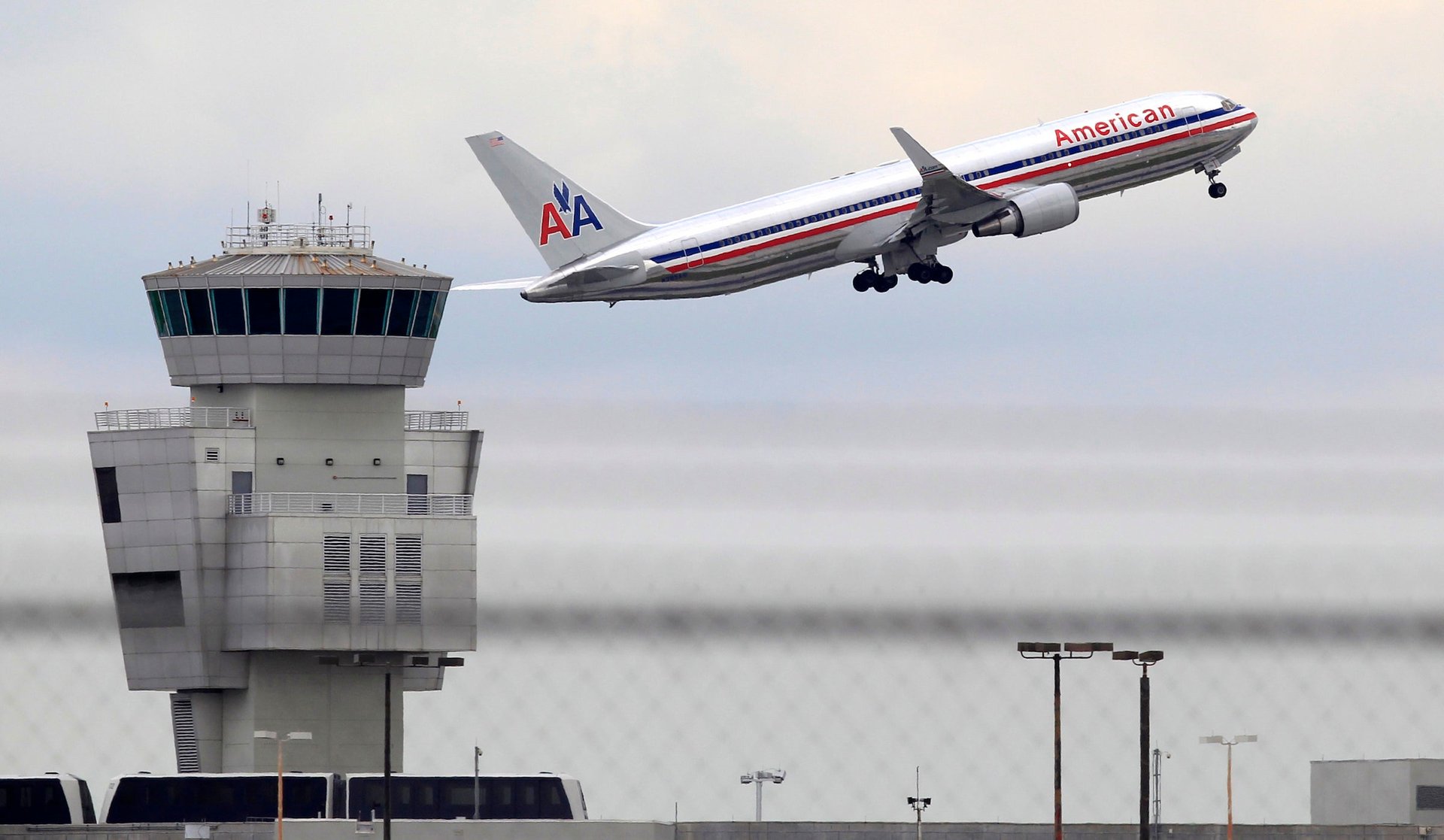American Airlines just reported the biggest quarterly profit in industry history—and its stock is still down
Like its competitors Delta and United, American Airlines is raking in cash as fuel prices plummet—a rather preposterous amount of cash, it turns out. From the company’s call today:


Like its competitors Delta and United, American Airlines is raking in cash as fuel prices plummet—a rather preposterous amount of cash, it turns out. From the company’s call today:
Today we reported record earnings of $1.9 billion, excluding special charges for the second quarter, to record not just for the second quarter at American, but actually the highest earnings American has ever had in one quarter in its history. We’re not the keepers of all industry data, but since this was the highest earnings of any airline this quarter, we think it was it was the highest quarterly earnings that any commercial airlines has ever reported.
Even with charges, the number is nearly double the company’s previous best quarter.
American Airlines, in bankruptcy just 18 months ago, benefits even more than its competitors from declining fuel prices, since it doesn’t engage in elaborate hedging strategies to protect itself from price swings.
Yet the company’s stock is still down more than 5%, because it turns out profit growth doesn’t tell the whole story. There are a number of worrying trends that make the company’s prospects look a bit less lustrous than they seem at first glance.
While net income is way up, revenue numbers are sluggish, down nearly half a billion dollars from the same period last year, even though the company flew substantially more:
Airline capacity is growing faster than demand, and that’s starting to pressure revenue and prices. Passenger revenue per average seat mile (PRASM) is closely watched by investors, because it measures the amount the company earns for every mile it flies.
The company also blames the decline on currency issues, weakness in South America, and a decline in surcharges.
Additionally, analysts have questioned the speed and success of the company’s integration with US Airways after their 2013 merger. And there seems to be some doubt that the company’s profits are a function anything other than lower fuel prices, highlighted by some tough analyst questions during the earnings conference call. Here’s JP Morgan’s Jamie Baker to company President Scott Kirby:
Scott, you didn’t articulate a path to PRASM growth, and costs are going to rise over time that’s inevitable. So in the absence of a positive PRASM, at some point profits eventually are going to shrink unless oil just keeps declining in perpetuity, and that can’t happen. So is this what management anticipates and if not, where is that path to PRASM growth?
Kirby replied that PRASM growth wasn’t really likely until late next year at the earliest, and is unlikely at all unless there’s some combination of less overcapacity, currency issues easing, and the global economy improving.
CEO Doug Parker referred repeatedly, as did other executives, to the size of the company’s buyback plan, but didn’t exactly offer a coherent or reassuring plan for expanding margins and revenue. He said overcapacity is being driven by cheap fuel.
Record profits are nice, but they when they’re solely due to cheap oil, they’re not enough for Wall Street.